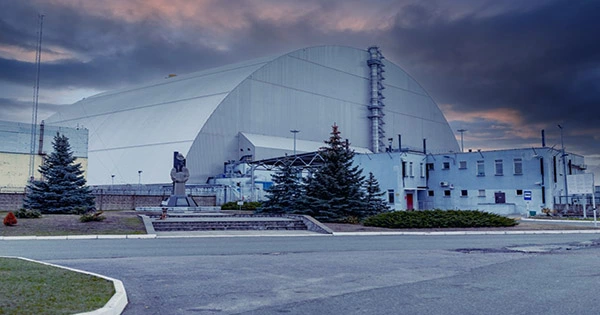Another theory has been proposed as to what caused the unexpected surge in radioactivity around Chernobyl during the early days of Russia’s invasion of Ukraine. They believe the increased radiation levels were caused by unidentified Russian military equipment tampering with sensors in the region, rather than tanks kicking up contaminated dirt or the leak or purposeful discharge of radioactive material. On February 24 and 25, when Russia marched into the abandoned city of Pripyat and the Chernobyl Nuclear Power Plant, Ukraine’s nuclear agency and interior ministry reported a significant increase in gamma radiation.
The results from a network of 67 gamma detectors deployed around the grounds of the wrecked nuclear power station, known as the Comprehensive Radiation Monitoring and Early Warning System, have been analyzed by a team of UK experts who have taken a detailed look at the situation (CRMS). Their study, which hasn’t been peer-reviewed yet, is available on the arXiv preprint service.
Modeling the reaction of contaminated soil to being driven over revealed that vehicle motions disturbing the soil would not result in such high amounts of radiation being observed. They tried to trace the Russian military’s movements in the region using Sentinel satellite photos, but the photographs were too low quality to provide any useful information.
Furthermore, the elevated radiation levels do not appear to be connected to places where radioactive debris is being confined, implying that a leak or purposeful release is likewise implausible. After ruling out these two possibilities, the researchers believe the solution lies in how Russian military communication equipment interacted with the sensors, which wirelessly transmit data back to the plant’s central hub.
“Military electro-magnetic frequency interference might potentially produce reporting abnormalities from detectors, although this would be anticipated to follow a geographic pattern and be detected for gamma dose rate detectors in other parts of Ukraine where military action has occurred.” “A more reasonable explanation is that the CRMS network base-station in Chornobyl’s wireless signal reception was disturbed,” the researchers write. As a counterpoint, there have been unconfirmed allegations that several Russian soldiers had to be evacuated from the Chernobyl region due to radiation illness, implying that contamination levels had risen. The troops are accused of driving through a highly toxic section of woodland near the power plant’s remains without wearing any protective gear.
It’s important to note that this is only preliminary research, and the scientists don’t have a lot of data to work with. Given the current crisis in Ukraine, sending researchers into the field to collect genuine on-the-ground data is impractical. The scenario is further complicated by the fact that the CRMS network has been down since early March, leaving the team in the dark regarding radiation levels in the region. “The CRMS, as well as other monitoring networks, must be brought back online as soon as possible,” the panel concluded, “so that the radiological situation in Ukraine, where intensive combat action persists in some regions, can be monitored.”
















